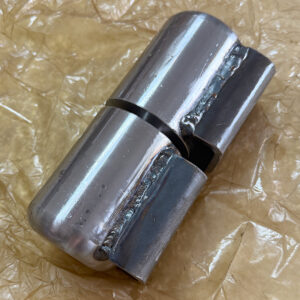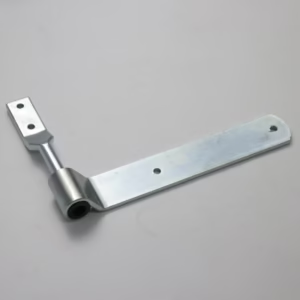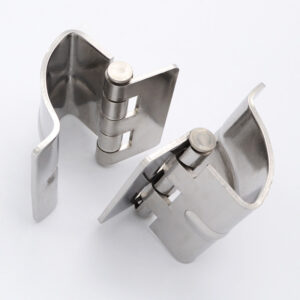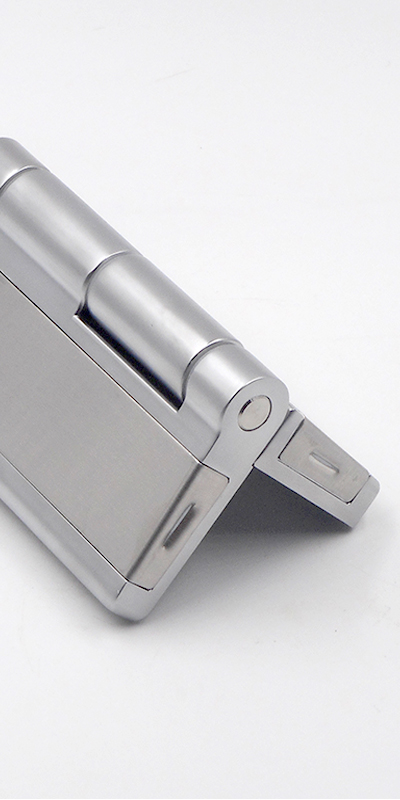Chamfered or non-chamfered? This small detail in hinge installation holes can significantly affect performance in industrial applications.
Chamfered mounting holes improve flush fitting with flat-head screws, while non-chamfered holes provide better grip for round-head fasteners. Each type supports different mechanical and aesthetic needs in industrial hinge assembly.
So how do these differences influence hinge stability, alignment, and long-term durability in industrial applications?
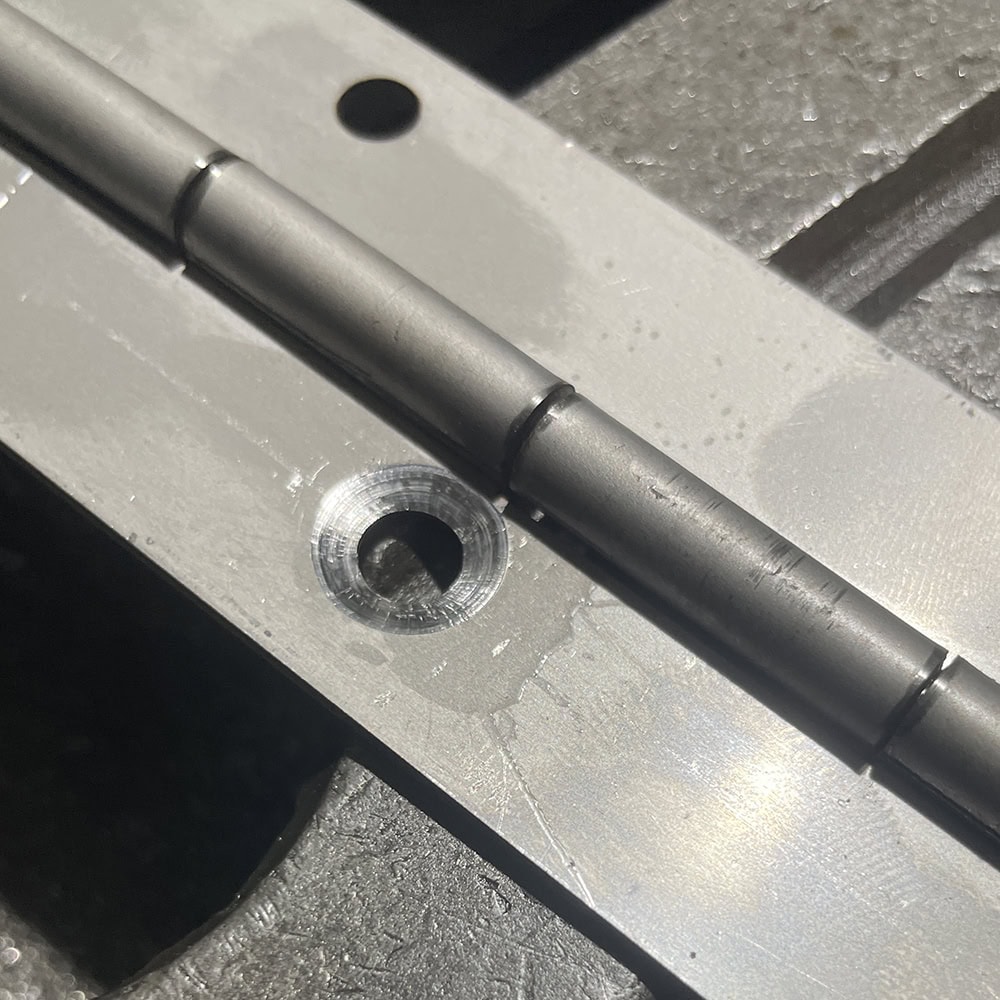
What Is a Chamfered Mounting Hole in Industrial Hinge Installation?
Chamfered mounting holes feature a beveled edge that matches the angle of countersunk screws or bolts. This allows fasteners to sit flush with the surface of the hinge or equipment panel.
A chamfered hole enables flush installation of fasteners, especially flat-head types, reducing protrusion and stress concentration. It’s essential in applications demanding a clean surface finish and tight mechanical tolerances.
Function of Chamfering in Industrial Hinge Design
Chamfering plays a vital role in both functional and visual aspects of industrial hinge systems. For example, in concealed hinges used in sensitive machinery or enclosures, a smooth surface without exposed fastener heads is critical. Chamfering ensures the fasteners align properly with the hinge leaf and prevents interference with adjacent mechanical components or enclosures.
Chamfered holes also reduce the risk of fastener misalignment during torque application. This is particularly important in high-precision environments like climatic test chambers and control panel housings, where even slight misalignments can result in faulty door operation or compromised sealing.
Manufacturing Standards and Chamfering
In industrial-grade hinge design, chamfer dimensions typically conform to ISO or DIN standards, such as 82° or 90° chamfer angles. These specifications ensure that the fasteners match the hole geometry perfectly for flush mounting.
For instance, aluminum hinges used in lightweight test enclosures often rely on chamfered holes to maintain both structural alignment and aesthetic presentation. Chamfering also prevents cracking or deformation of softer metals during installation, which is crucial for materials like aluminum or thin stainless steel.
| Parameter | Chamfered Hole | Non-Chamfered Hole |
|---|---|---|
| Fastener Compatibility | Flat-head screws | Round-head bolts |
| Surface Finish | Flush | Slightly raised |
| Application Focus | Aesthetics, flush mount | Structural strength focus |

Why Are Non-Chamfered Holes Still Common in Industrial Applications?
In many heavy-duty or large-scale installations, non-chamfered holes remain the go-to option due to their simplicity and superior structural support. They’re especially suited for rugged environments and thick-gauge materials.
Non-chamfered holes provide better holding power for round-head or hex bolts, especially in high-load or vibration-prone settings. They’re ideal for robust industrial applications.
High-Torque or Load-Bearing Hinge Installations
When installing trailer door hinges or heavy-duty weld-on hinges for transport equipment, engineers often prefer non-chamfered mounting holes. These designs prioritize torque resistance and strength over appearance. The rounded or hex bolts used in such hinges offer higher tensile and shear strength when seated firmly into a flat hole.
Heavy doors—such as those on climate chambers or cold storage room hinges—must withstand frequent opening, closing, and mechanical shock. Non-chamfered holes reduce the risk of fastener loosening, especially when paired with lock washers or adhesive compounds.
Cost-Efficiency and Tolerance in Sheet Metal Applications
In high-volume manufacturing, avoiding chamfering steps reduces cycle time and machining costs. For instance, electrical enclosure manufacturers that utilize wide-throw hinges benefit from simplified non-chamfered holes that allow slight misalignment during assembly—critical in high-speed production lines.
Additionally, thicker sheet metal components are more forgiving of non-chamfered fastener installation. With fewer dimensional constraints, non-chamfered holes increase manufacturing flexibility and reduce rejection rates from misaligned cuts or drills.
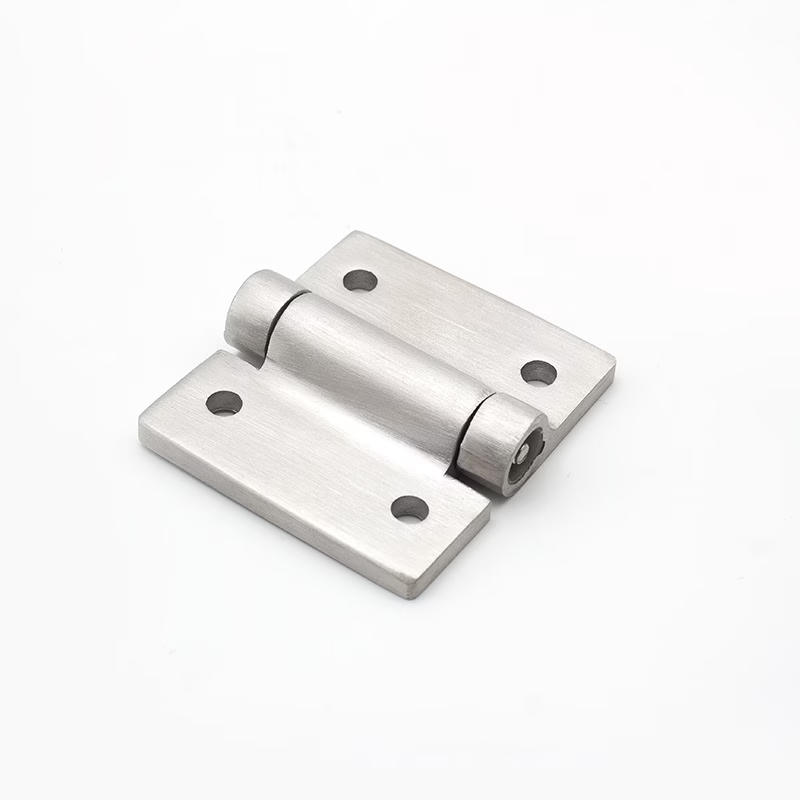
How Does Chamfering Impact Hinge Alignment and Long-Term Durability?
Chamfering plays a critical role in ensuring fastener seating and hinge alignment during assembly, directly affecting the long-term mechanical integrity of the hinge.
Chamfered holes improve alignment by centering the fastener, reducing stress concentration and vibration over time—ideal for high-cycle or precision applications.
Reduced Vibration and Loosening Over Time
In industrial systems that experience vibration—such as HVAC panels or machine tool access doors—chamfered holes provide consistent seating depth, minimizing micro-movement of fasteners. This helps maintain joint integrity and reduces the risk of hinge fatigue or bolt backing out.
When paired with marine hinges exposed to repetitive wave-induced vibrations or engine-generated oscillations, chamfered holes offer a more secure connection. The flush fit also prevents contamination from fluids, dust, or other industrial particles entering through fastener gaps.
Impact on Surface Stress and Cracking
Flat-ended holes can act as initiation points for cracks if there’s uneven force distribution or stress concentration. Chamfered holes disperse stress more evenly around the fastener head and reduce sharp transition zones.
This becomes vital when using hard metals or delicate finishes, such as in special hinges installed in temperature-controlled chambers or electro-sensitive enclosures. Proper chamfering minimizes the risk of micro-fractures during torque application and extends the hinge’s service life.

When Should You Choose Chamfered vs. Non-Chamfered Holes?
Engineers must choose between chamfered and non-chamfered holes based on performance requirements, aesthetics, and material characteristics.
Use chamfered holes for flush aesthetics, vibration resistance, and fastener precision; choose non-chamfered holes for durability, ease of assembly, and structural performance.
Practical Use-Case Scenarios
| Application Type | Recommended Hole Type | Reason |
|---|---|---|
| Precision test chambers | Chamfered | Flush fit, no internal protrusions |
| Heavy truck door hinges | Non-Chamfered | Maximum grip and strength under load |
| Electrical cabinet hinges | Chamfered | Aesthetic alignment and reduced assembly issues |
| Outdoor industrial enclosures | Non-Chamfered | Tolerates weather, easier to maintain |
Design Engineering Decisions
The decision is rarely made in isolation. Engineers consider fastener head types, expected load cycles, and environmental conditions. For example, CAD models often specify chamfer details for panels using detachable hinges to ensure user-friendly disassembly.
Chamfered holes also offer benefits when using adjustable torque fasteners or when dealing with electro-galvanized surfaces, which are more prone to chipping during mechanical installation without chamfering.
Conclusion
Chamfered and non-chamfered mounting holes each serve specific roles in industrial hinge installations. Selecting the right one ensures proper load handling, smooth assembly, and long-lasting performance.

